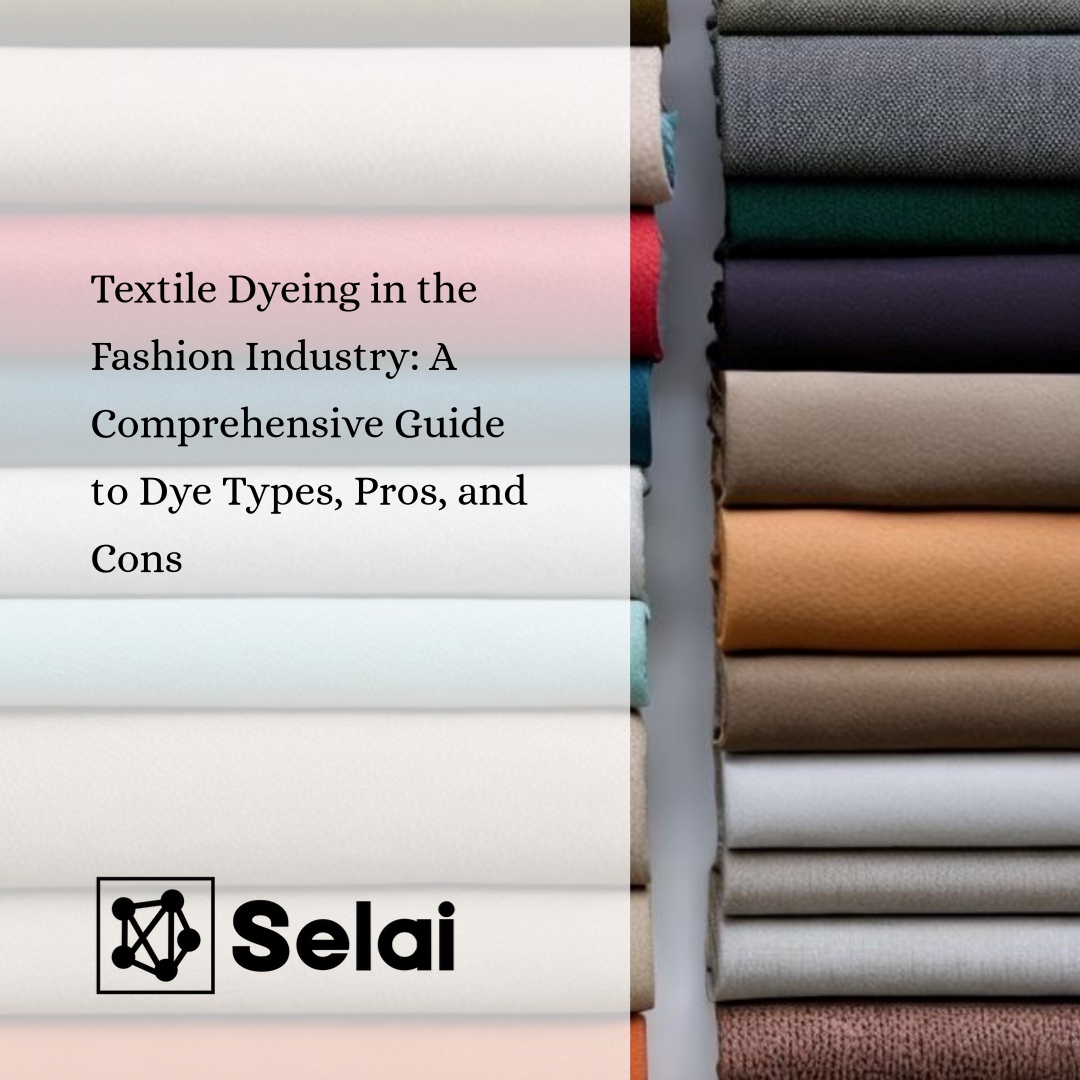
Color plays a pivotal role in the textile industry, transforming raw fabrics into vibrant, eye-catching garments. The selection of the right dye is critical in achieving the desired color, appearance, and performance of the fabric. In this article, we will explore various types of dyes commonly used in the textile industry, along with their respective pros and cons.
Types of Textile Dyes:
1. Direct Dyes
– Pros:
– Simple application process, often done at lower temperatures.
– Suitable for cellulosic fibers like cotton, rayon, and linen.
– Relatively cost-effective.
– Cons:
– Poor color fastness, especially to washing and light.
– Limited color range compared to other dyes.
2. Reactive Dyes:
– Pros:
– Excellent color fastness, especially to washing and light.
– Suitable for a wide range of fibers, including cotton, silk, and wool.
– Good color range and vibrancy.
– Cons:
– Complex application process, including pre-treatment and fixation stages.
– Can be more expensive than direct dyes.
3. Disperse Dyes:
– Pros:
– Ideal for synthetic fibers like polyester and nylon.
– Good color fastness to light and washing.
– Cons:
– Not suitable for natural fibers.
– Requires high-temperature application.
– Limited color range for some shades.
4. Vat Dyes:
– Pros:
– Excellent color fastness.
– Suitable for natural fibers like cotton and wool.
– Cons:
– Complex and time-consuming dyeing process.
– Requires the use of reducing agents.
– Limited color range.
5. Sulfur Dyes:
– Pros:
– Good color fastness to washing and light.
– Ideal for cellulosic fibers, especially for dark shades.
– Cons:
– Not suitable for synthetic fibers.
– Has an unpleasant odor during processing.
6. Acid Dyes:
– Pros:
– Excellent color range and vibrancy.
– Suitable for protein fibers like silk and wool.
– Cons:
– Not suitable for cellulosic or synthetic fibers.
– May require an acidic environment for dyeing, which can be harmful to the environment.
7. Basic Dyes:
– Pros:
– Good color range and vibrancy.
– Suitable for synthetic fibers like acrylic and certain types of polyester.
– Cons:
– Poor color fastness, especially to light and washing.
– Limited use for natural fibers.
8. Reactive Disperse Dyes:
– Pros:
– Combines the advantages of reactive and disperse dyes.
– Suitable for blends of natural and synthetic fibers.
– Cons:
– Complex dyeing process.
Pros and Cons of Textile Dyes:
Now, let’s delve deeper into the pros and cons of these common textile dyes:
Direct Dyes:
Direct dyes offer simplicity and affordability in dyeing natural fibers but suffer from poor color fastness, limiting their use in applications where long-lasting color is essential.
Reactive Dyes:
Reactive dyes excel in color fastness but require a more complex dyeing process. They are suitable for various fibers, making them versatile but potentially more costly.
Disperse Dyes:
Disperse dyes are perfect for synthetics but impractical for natural fibers. Their high-temperature application might not be suitable for delicate fabrics.
Vat Dyes:
Vat dyes provide excellent color fastness but involve a time-consuming process and the use of reducing agents. They are best suited for natural fibers.
Sulfur Dyes:
Sulfur dyes offer superb color fastness for dark shades on cellulosic fibers but emit an unpleasant odor during processing. They aren’t suitable for synthetic fibers.
Acid Dyes:
Acid dyes provide a wide color range for protein fibers but are not compatible with cellulosic or synthetic fibers. The acidic environment required can raise environmental concerns.
Basic Dyes:
Basic dyes produce vibrant colors on synthetics but suffer from poor color fastness. They have limited use for natural fibers.
Reactive Disperse Dyes:
Reactive disperse dyes combine the advantages of both reactive and disperse dyes, making them suitable for blends of natural and synthetic fibers but requiring a complex dyeing process.
The textile industry relies on a diverse array of dyes to color fabrics, each with its own set of pros and cons. The choice of dye depends on various factors, including fabric type, desired color, colorfastness requirements, and cost considerations. Environmental concerns are increasingly influencing dye selection, with a growing emphasis on sustainable and eco-friendly dyeing processes. Ultimately, the careful selection of dyes is crucial in producing textiles that not only look beautiful but also perform well and minimize their environmental impact.
